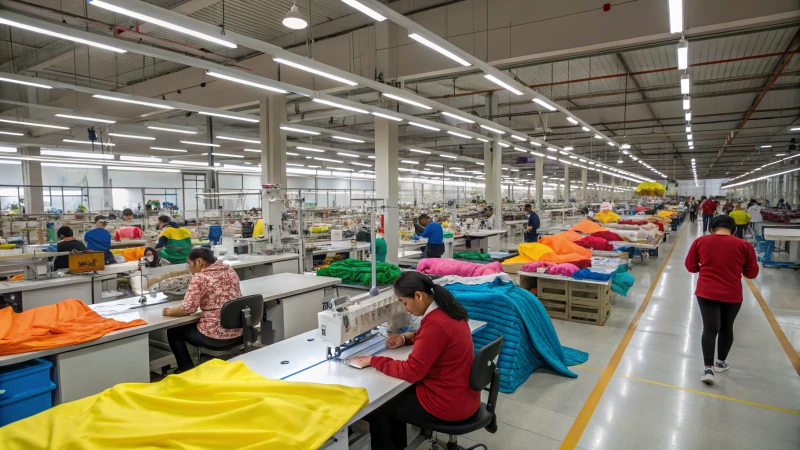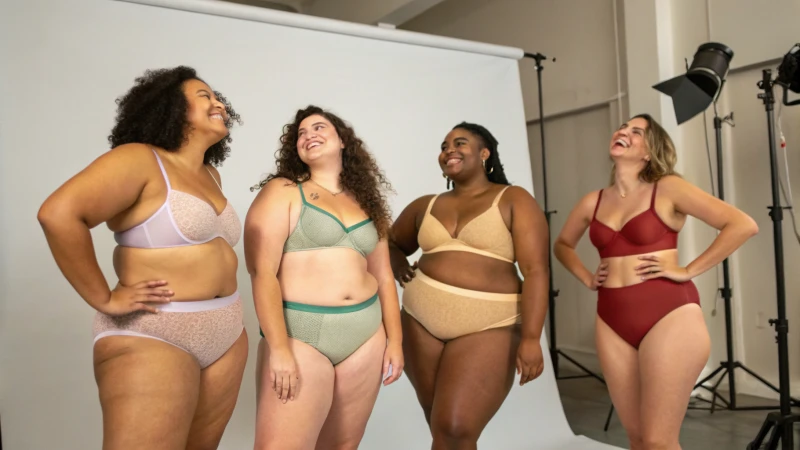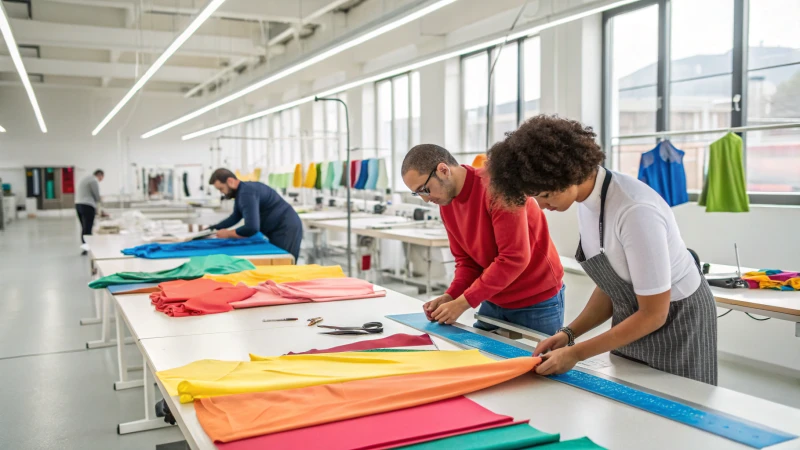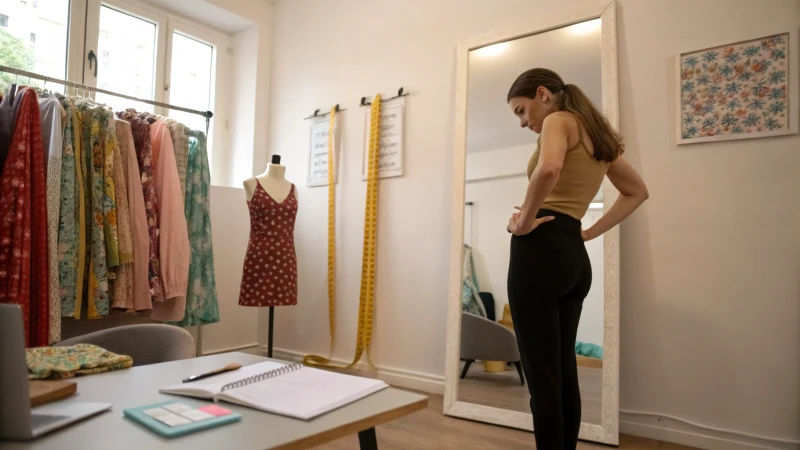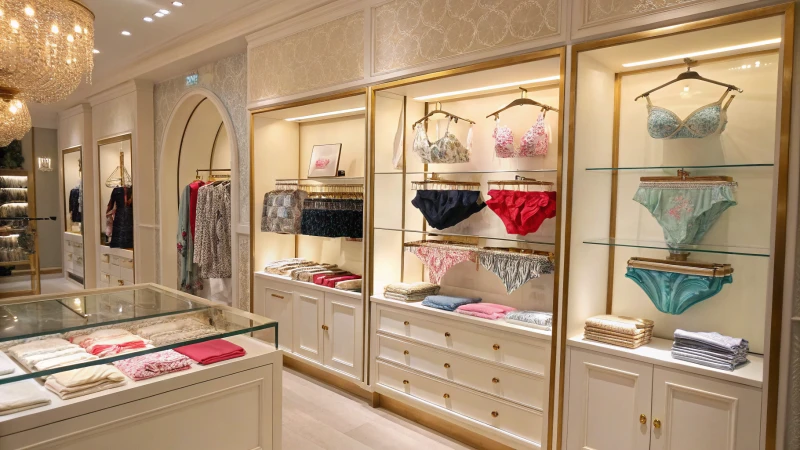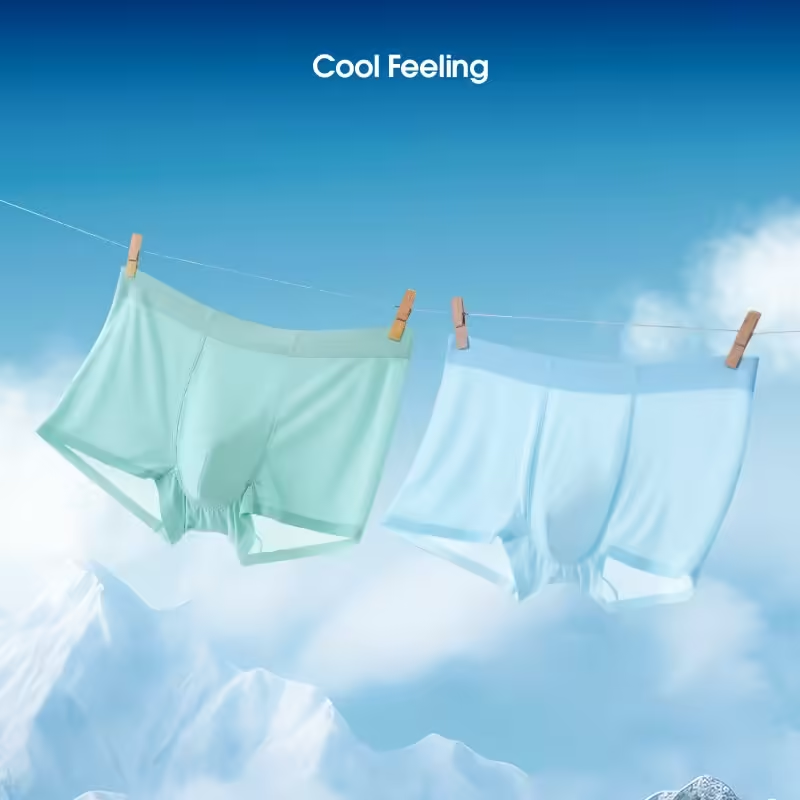
Think about that scorching summer day when you wanted your underwear to feel like an air conditioner. You are definitely not the only one.
Summer underwear uses cooling technologies like fabrics that pull moisture away, breathable mesh, cooling fibers and treatments that fight bacteria. It also has quick-drying features. These inventions help you stay cool and dry. They manage heat and moisture well during hot weather.
I remember trying moisture-wicking briefs for the first time. It felt like entering a personal climate zone. These fabrics pull sweat away from your skin. You feel fresh, even in very hot weather. Breathable mesh panels act like small windows. They let in a cool breeze just when you need it.
This is only the start. Some brands use special cooling fibers. They use jade particles or special materials to cool your skin. It's like a tiny air conditioner right where you need it. Anti-bacterial treatments and quick-drying features add to the benefits. This is really helpful for staying cool.
Imagine not worrying about feeling sticky or uncomfortable again. It doesn't matter how high the temperature rises. This is a huge relief. It changes the game for enjoying summer without sticky underwear. When shopping for summer clothes, consider these cooling features. They could probably save your summer and keep you sane.
Moisture-wicking fabrics prevent heat retention in underwear.True
These fabrics draw moisture away from the skin, reducing heat buildup.
Cooling fiber technology increases the weight of summer underwear.False
Cooling fibers are designed to be lightweight, enhancing comfort.
How Do Moisture-Wicking Fabrics Keep You Dry?
When you work out at the gym or go for a run, do you ever think about why your clothes don’t stick to you?
Moisture-wicking materials draw sweat away from your skin. They move it to the surface of the fabric. Here, it very quickly evaporates. This keeps you dry and comfortable. This happens even during really intense workouts. It truly is a helpful feature.

Understanding Moisture-Wicking Technology
I remember when I first tried moisture-wicking clothes for exercise. What a big change! These special materials, usually made from polyester or nylon, pull sweat away from your skin. Think of these fibers as tiny straws that lift moisture to the top layer of the fabric. Here, it dries quickly. It feels like magic, but it's really just smart design.
Moisture-wicking fabrics are designed with innovative technology1 that utilizes synthetic fibers like polyester or nylon, known for their high absorbency. These fibers feature a unique cross-section shape that allows them to pull moisture away from the skin. Once moisture reaches the fabric surface, it spreads out, allowing it to evaporate faster.
The Role of Fabric Structure
The true secret is the fabric's structure itself. It works like a candle wick, moving moisture along the fibers. I used to deal with sticky wetness and skin irritation during my runs. Now, with these fabrics, those problems are gone. Faster evaporation keeps me dry and comfy. No more rubbing or pain!
The structure of moisture-wicking fabrics is crucial. These materials often have a capillary action, similar to a wick in a candle, drawing moisture along the fibers. This is why they are highly effective in athletic wear2. The faster evaporation ensures that your skin remains dry, preventing discomfort and potential skin irritations.
| Feature | Function |
|---|---|
| Synthetic Fibers | High absorbency and quick drying |
| Unique Cross-Section | Pulls sweat from skin to fabric surface |
| Capillary Action | Moves moisture along fibers for evaporation |
Comparison with Traditional Fabrics
Before I knew about moisture-wicking materials, I always wore cotton. Cotton feels nice, but when I sweated, it felt like wearing a wet towel. It holds onto moisture and becomes heavy.
Traditional fabrics like cotton tend to hold moisture instead of wicking it away. This can lead to a heavy, damp feeling during workouts.
In contrast:
| Fabric Type | Moisture Management | Comfort Level |
|---|---|---|
| Cotton | Retains moisture | Less comfort |
| Wicking Fabric | Evaporates quickly | High comfort |
The differences3 are significant: Moisture-wicking fabrics maintain their lightweight feel even when you're sweating.
Benefits Beyond Sportswear
Moisture-wicking materials are not just for sports. Now, I wear them every day and even at night due to their comfort-enhancing properties.
While primarily used in sportswear, these fabrics have applications beyond athletics. They're becoming popular in everyday clothing and even sleepwear because their comfort and usefulness are very hard to ignore.
The versatility4 of these fabrics makes them an attractive choice for any lifestyle focused on comfort and performance.
New technology adds features like odor control and UV protection to these fabrics. They are useful for both active and relaxed times—maybe they are what you need to stay comfy and dry in any situation.
Moisture-wicking fabrics use cotton fibers for absorption.False
Moisture-wicking fabrics primarily use synthetic fibers like polyester.
Capillary action aids moisture movement in wicking fabrics.True
Capillary action helps draw moisture along fibers, enhancing evaporation.
How Do Breathable Mesh Panels Enhance Ventilation?
Picture the cool breeze on a hot summer day. Mesh panels bring this magic to life. These panels change how people feel airflow and stay cool.
Breathable mesh panels let air circulate freely. This reduces heat and moisture buildup. They are strategically placed to allow maximum airflow. These panels increase comfort in clothing. Buildings also benefit from their use. Really impressive energy efficiency results from these panels.

Understanding Breathable Mesh Panels
Picture a really hot summer day. I wore my new gym clothes and felt surprisingly cool. Tiny holes in the fabric allowed air to flow in and out. This airflow made everything feel very comfortable. Breathable mesh panels are great like that. They really improve comfort. These panels are not just in clothing; they are important in building designs too. Hot air leaves and cooler air enters, making both summer clothes and buildings very comfortable.
Applications in Apparel
In fashion, especially workout clothes, mesh panels are extremely helpful against sweat. I discovered this when I added cooling technologies5 to my summer outfits. The panels are amazing for controlling heat, perfect for hard workouts or surviving hot days.
| Clothing Type | Benefits of Mesh Panels |
|---|---|
| Summer Outfits | Enhanced cooling and dryness |
| Activewear | Improved moisture control |
Clothes with mesh panels changed my life. They keep me cool and dry, even on really busy days.
Use in Architectural Design
In architecture, I once admired a modern building that seemed to "breathe." The secret was mesh panels in the structure. These panels reduce the need for artificial cooling systems by allowing natural air to flow inside.
Energy-efficient buildings6 use these panels for good airflow, aligning well with green building practices by reducing energy use and improving indoor air quality.
Material Choices and Variations
I explored various materials for mesh panels. Each type offers different benefits:
- Polyester: Very breathable and durable, suitable for high-performance needs.
- Cotton: Provides moderate breathability and is softer.
The right material depends on balancing these factors for specific uses.
| Material Type | Breathability Level | Durability |
|---|---|---|
| Polyester | High | High |
| Cotton | Moderate | Moderate |
Strategic Placement
Placing these panels correctly really matters:
- In clothing: Panels under the arms or on the back cool effectively; I felt this during my runs.
- In buildings: Panels near windows or vents improve cross-ventilation.
Future Trends
Breathable mesh panels will likely become more important for green solutions. New materials might offer even better airflow and strength.
Such innovations could change industries focused on climate control7. I am really excited to see future developments with this technology.
Breathable mesh panels reduce energy consumption in buildings.True
They enable passive cooling, lessening reliance on artificial systems.
Cotton mesh panels provide higher breathability than polyester.False
Polyester offers higher breathability and durability than cotton.
Can Cooling Fiber Technology Really Lower Skin Temperature?
Do you ever feel like you are melting in the summer heat? This happens even when you try your best to stay cool.
Cooling fiber technology reduces skin temperature. This happens through materials like jade particles or phase-change substances. These fabrics absorb and release heat. They help dissipate heat for a cooler wearing experience.
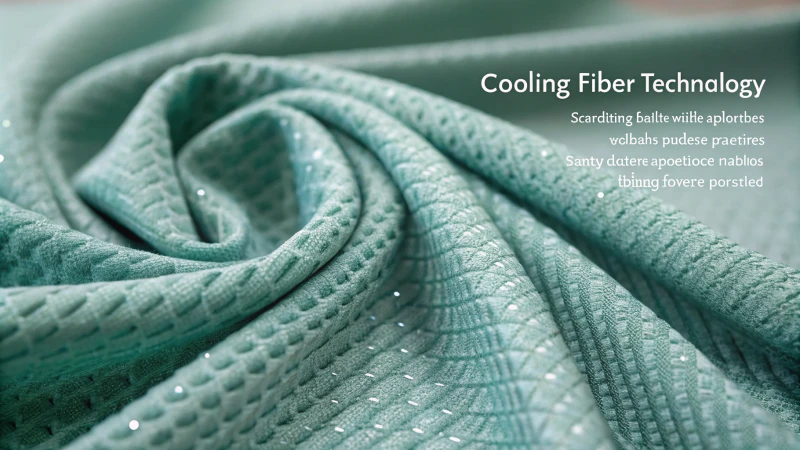
How Does Cooling Fiber Technology Work?
Cooling fibers use fascinating materials that interact directly with body heat. Imagine fibers with jade particles, known for their cooling properties, or other materials that absorb heat. It feels like wearing mini air conditioners in your clothes! During a heatwave, these fibers help a lot by regulating temperature and keeping you comfortable.
The Science Behind Heat Absorption
The magic lies in the ability to absorb and release heat. Jade particles8 have been valued in East Asia for ages due to their natural cooling abilities. These particles integrated into fabrics cool the skin by drawing heat away, making us feel cooler—it is nature's air-conditioning.
Comparing Cooling Fiber Technologies
| Technology | Material Used | Effectiveness |
|---|---|---|
| Jade-infused fibers | Natural jade particles | High |
| Phase-change materials | Synthetic compounds | Moderate |
| Moisture-wicking | Polyester blends | Varies |
Understanding the differences in these technologies helps me choose my cooling garments wisely.
Practical Applications and Benefits
Adding these fibers to clothing, especially activewear, changes everything. Athletes who push their limits benefit from enhanced performance9 due to reduced overheating. Even for me, trying to survive a hot day, these clothes provide relief.
These fabrics do more than just cool; they often wick moisture and resist odors. It feels like a two-for-one deal—staying dry and fresh in the heat. Many brands notice this trend and explore these technologies to mix fashion with function. For those wanting comfort in tough climates, this innovation is certainly worth a look.
Jade particles in fibers lower skin temperature.True
Jade particles have natural cooling properties, aiding heat conduction.
Moisture-wicking technology always cools the skin.False
Effectiveness varies; it's not primarily designed for cooling.
Why Are Anti-Bacterial and Odor-Resistant Treatments Important?
Picture clothes that stay fresh and clean without frequent washing. Curious?
Anti-bacterial and odor-resistant treatments in textiles stop bacteria and odors. They help keep clothes fresh, which means very little laundry. These treatments really matter for hygiene and prolong garment life. They also very much reduce environmental harm.
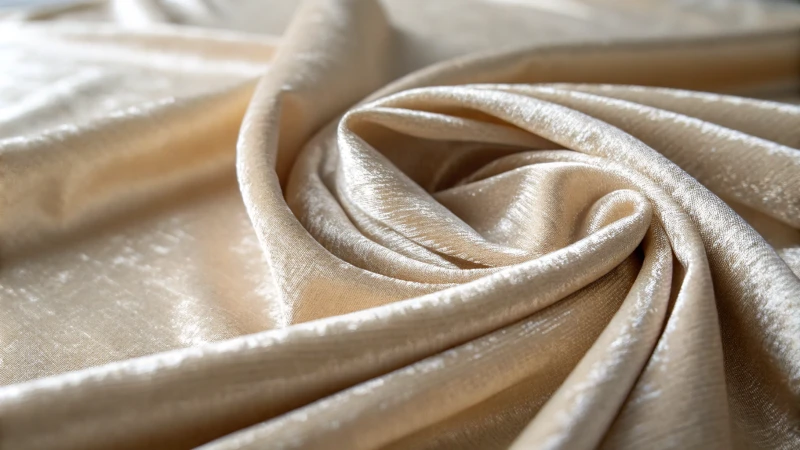
Understanding the Role of Anti-Bacterial Treatments
Ever taken a shirt out of the laundry basket, sniffed it quickly and thought, "Maybe this can last one more day"? We have all experienced this, and this is where anti-bacterial treatments are very useful. These treatments use substances like silver ions or zinc pyrithione to fight bacteria directly and stop them from growing. This keeps your clothes fresh longer, meaning your favorite clothes need fewer washes and probably last longer too.
By limiting bacterial proliferation10, these treatments keep textiles fresh.
| Advantages | Details |
|---|---|
| Hygiene | Reduced risk of bacterial infections |
| Durability | Extended lifespan due to less frequent washing |
| Environmental Impact | Decreased water and energy consumption |
The Science Behind Odor-Resistant Treatments
If you've been in an awkward spot because your workout clothes smelled bad, you'll appreciate odor-resistant technology. It deals with odor at the root by interacting with bacterial enzymes. This is particularly beneficial for activewear that must stay fresh during tough gym sessions.
Odor-resistant technologies focus on neutralizing odor-causing compounds using advanced chemical agents11.
- Moisture-Wicking: These fabrics pull sweat away from your skin, keeping you dry and reducing bacteria growth.
- Long-Lasting: Many treatments can endure multiple washes, ensuring sustained effectiveness.
Industry Applications
These innovations go beyond workout clothes; many industries use them:
- Fashion - Everyday clothes become more comfortable.
- Healthcare - Important for medical uniforms to prevent infections.
- Home Textiles - Bedding stays fresh longer.
Understanding the importance of anti-bacterial treatments12 helps brands develop new products that meet people's needs for sustainable and clean solutions. As technology evolves, expect even more effective treatments that will solve our changing needs.
Anti-bacterial treatments extend textile lifespan.True
They reduce washing frequency, preserving fabric integrity.
Odor-resistant fabrics are ineffective after one wash.False
Many treatments endure multiple washes, maintaining effectiveness.
Conclusion
Summer underwear utilizes innovative cooling technologies like moisture-wicking fabrics, breathable mesh, and cooling fibers to enhance comfort and keep you dry during hot weather.
This link offers an in-depth explanation of the technology behind moisture-wicking fabrics, enhancing your understanding. ↩
Explore how these fabrics enhance performance and comfort in sports and fitness activities. ↩
Learn why moisture-wicking fabrics outperform cotton in keeping you dry and comfortable. ↩
Discover how these fabrics are used in various clothing types for added comfort. ↩
Explore innovative cooling technologies that integrate mesh panels for superior performance. ↩
Learn how energy-efficient buildings utilize mesh panels for effective natural ventilation. ↩
Find out how breathable materials are revolutionizing climate control solutions. ↩
Explore how jade particles are utilized in textiles for their natural cooling properties, offering insights into ancient uses and modern applications. ↩
Discover how cooling technology enhances athletic performance by regulating body temperature, reducing sweat, and improving comfort during intense activities. ↩
Discover how silver ions disrupt bacteria at the cellular level, ensuring your textiles remain hygienic. ↩
Explore the advanced chemicals that make fabrics resistant to odors, enhancing long-term freshness. ↩
Learn why integrating these treatments is crucial for eco-friendly and durable clothing solutions. ↩


